Have you ever wondered how your business stacks up against the competition? You’re not alone! A staggering 94% of companies invest in competitive intelligence to stay ahead in their industries. Welcome to our comprehensive guide on competitor analysis – your secret weapon for business success in 2024!
Picture this: You’re a detective, and your competitors are the fascinating subjects of your investigation. But instead of magnifying glasses and fingerprint dust, you’re armed with cutting-edge digital tools and data-driven strategies. Exciting, right?
Let’s face it – in today’s lightning-fast business world, knowing what your rivals are up to isn’t just nice to have; it’s crucial. Whether you’re a scrappy startup or a corporate giant, understanding your competitive landscape can be the difference between thriving and merely surviving.
But here’s the kicker: competitor analysis isn’t just about playing defense. It’s your golden ticket to uncovering untapped opportunities, refining your unique value proposition, and ultimately leapfrogging the competition. Who doesn’t want that?
In this guide, we’ll dive deep into the what, why, and how of competitor analysis. We’ll explore everything from identifying your true competitors (spoiler alert: they might not be who you think!) to leveraging state-of-the-art tools to uncover their secrets. Plus, we’ll show you how to turn all that juicy intel into actionable strategies that’ll give your business the edge.
Ready to uncover your competitors’ playbooks and skyrocket your business strategy? Buckle up – it’s time to become a master of competitor analysis!
What is Competitor Analysis and Why is it Crucial?

Competitor analysis isn’t just a fancy business term – it’s your ticket to staying ahead in the game! Simply put, it’s the process of sizing up your business rivals to understand their strengths, weaknesses, and strategies. But why should you care?
Well, imagine trying to win a race with a blindfold on. That’s what running a business without competitor analysis is like! By peeking behind the curtain of your competitors’ operations, you gain invaluable insights that can shape your strategies. It helps you spot market trends, identify gaps in your offerings, and even predict your competitors’ next moves.
In 2024, with markets evolving at breakneck speed, competitor analysis isn’t just important – it’s essential for survival and growth. It’s the difference between being a market leader and being left in the dust. So, ready to take off that blindfold and race ahead?
Identifying Your Competitors: Who’s Really in the Race?
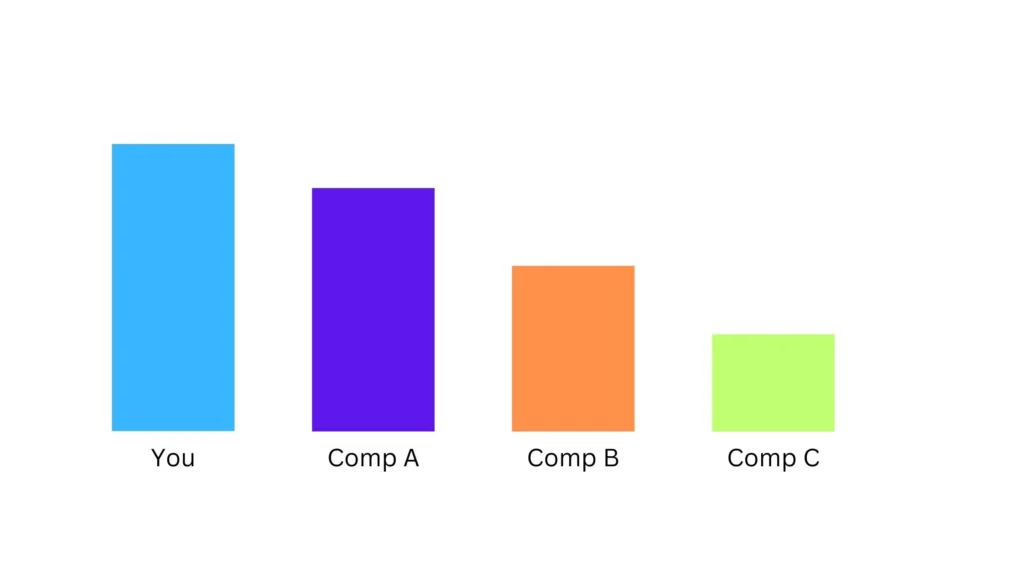
Think you know who your competitors are? Think again! In today’s interconnected market, your true rivals might not be who you expect. Let’s break it down:
First, we’ve got your direct competitors – the obvious ones who offer similar products or services to the same target audience. But don’t stop there! Indirect competitors are the sneaky ones who might be solving the same customer problem differently.
So, how do you unmask these elusive competitors? It’s time to put on your detective hat! Start by googling your products or services and see who pops up. Dive into industry reports, attend trade shows, and yes, even ask your customers who else they considered before choosing you.
But here’s where it gets really fun – tools like SEMrush and Ahrefs can reveal competitors you never knew existed. These digital sleuths analyze search data to show you who’s competing for the same keywords and audience attention.
Remember, knowledge is power. By creating a comprehensive competitor matrix, you’ll have a bird’s-eye view of your competitive landscape. It’s like having a treasure map of the market – X marks the spot where your business can shine!
Top Competitor Analysis Tools for 2024
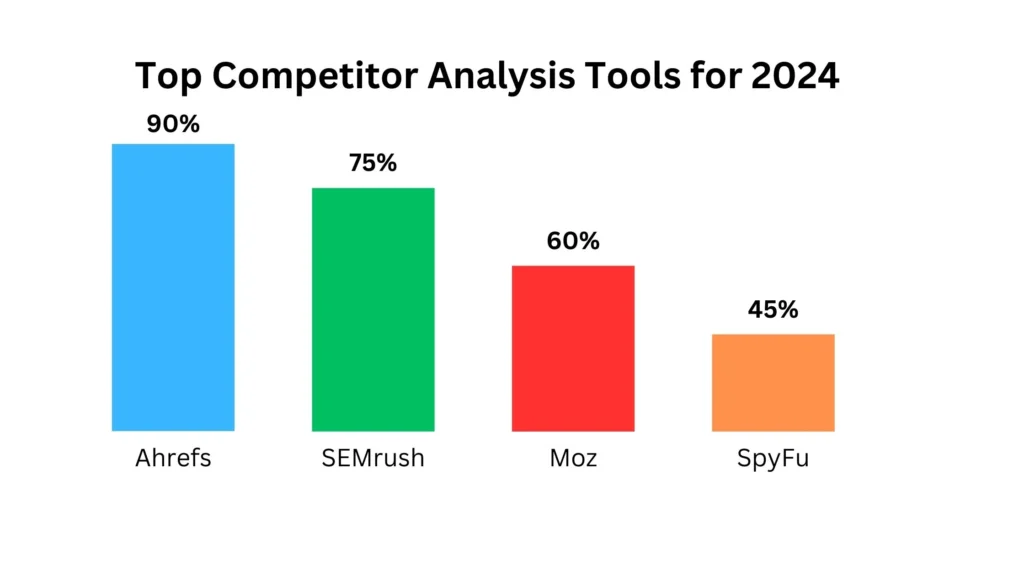
Welcome to your toolbox for competitive domination! In 2024, we’re spoiled for choice when it comes to competitor analysis tools. Let’s dive into some game-changers:
- SEMrush: The Swiss Army knife of digital marketing. It’s not just for SEO – use it to spy on competitors’ ad strategies, social media performance, and more.
- Ahrefs: Want to know where your competitors are getting their backlinks? Ahrefs has got you covered. It’s like having an X-ray vision for your rivals’ SEO strategies.
- BuzzSumo: Curious about what content is making waves in your industry? BuzzSumo lets you peek at your competitors’ most shared content. Talk about inspiration on tap!
- SimilarWeb: Ever wished you could see your competitors’ website traffic? SimilarWeb makes that dream a reality. It’s like having a backstage pass to their digital presence.
- Sprout Social: For social media sleuths, this tool is a goldmine. Track your competitors’ social performance and engagement rates across platforms.
Remember, tools are great, but it’s how you use them that counts. Mix and match to create your perfect competitor analysis cocktail. Cheers to staying ahead of the curve!
Step-by-Step Guide to Conducting a Comprehensive Competitor Analysis

Ready to roll up your sleeves and dive into competitor analysis? Let’s break it down into bite-sized steps:
- Set Clear Objectives: What do you want to achieve? More market share? Better product features? Define your goals first.
- Identify Your Competitors: Remember our detective work earlier? Put it into action!
- Gather Intel: Collect data on their products, pricing, marketing strategies, and online presence. Be thorough – details matter!
- Analyze Their Online Game: Dissect their website, SEO strategies, and content. What are they doing well? Where are they falling short?
- Decode Their Social Media: Are they killing it on Instagram but neglecting Twitter? Take notes!
- Evaluate Market Positioning: How do they present themselves? What’s their unique selling proposition?
- SWOT It Out: Conduct a SWOT analysis for each competitor. Yes, it’s old school, but it works!
- Look for Patterns: Are there any trends in the data you’ve collected? These could be golden opportunities.
- Identify Gaps: Where are your competitors dropping the ball? That’s your chance to swoop in and save the day!
- Plan Your Move: Based on your findings, what actions can you take to gain a competitive edge?
Remember, competitor analysis isn’t a one-and-done deal. Make it a regular part of your business strategy. Stay curious, stay informed, and most importantly, stay ahead!
SEO Competitor Analysis: Uncovering Their Search Secrets
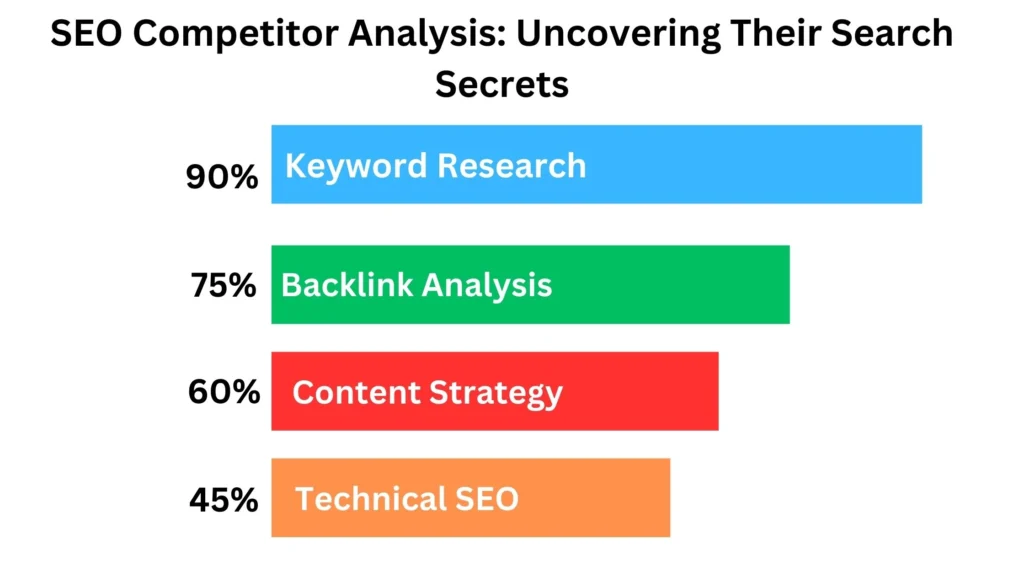
Ready to climb the search engine rankings? It’s time to uncover your competitors’ SEO secrets! Here’s how to become the Sherlock Holmes of the digital world:
- Keyword Gap Analysis: Use tools like SEMrush to find keywords your competitors are ranking for, but you’re not. It’s like finding hidden treasure in the SEO world!
- Backlink Detective Work: Analyze your competitors’ backlink profiles. Who’s linking to them? Can you get in on that action?
- On-Page SEO Showdown: Compare your on-page SEO elements (title tags, meta descriptions, header tags) with your competitors’. Are they outperforming you? Time to step up your game!
- Content Strategy Evaluation: What type of content is working for them? Blog posts? Videos? Infographics? Take notes and adapt!
- Technical SEO Check: Look at their site speed, mobile-friendliness, and schema markup. Sometimes, the devil is in the technical details.
- Local SEO (if applicable): How are your competitors optimizing for local search for brick-and-mortar businesses? Are they dominating Google My Business?
Remember, the goal isn’t to copy your competitors but to learn from them and do even better. It’s like standing on the shoulders of giants – and then growing a few extra inches! With these insights, you’ll be well on your way to SEO stardom.
Competitive Pricing Strategies: Finding the Sweet Spot
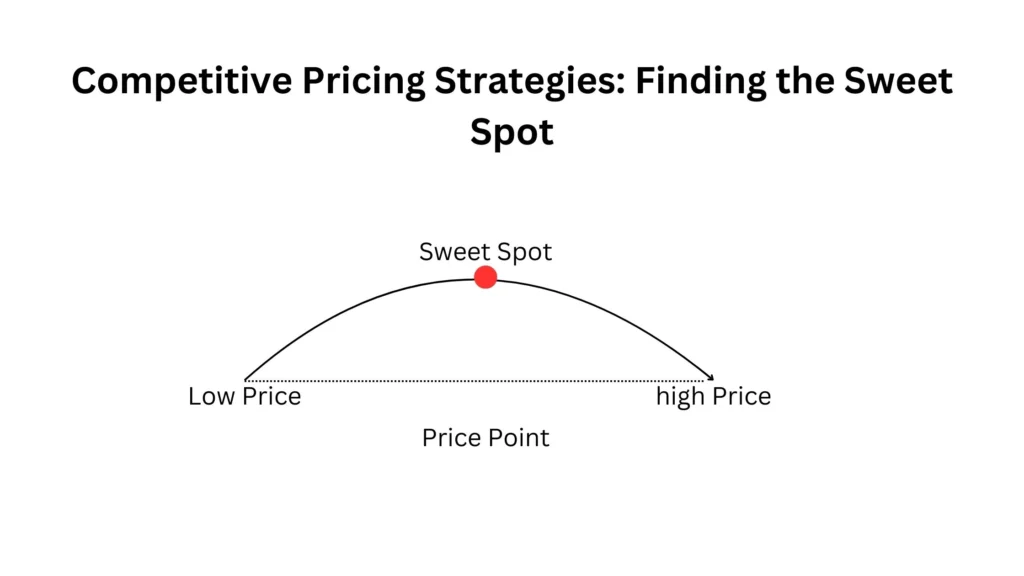
Pricing – it’s not just about slapping a number on your product. It’s an art, a science, and sometimes, a bit of magic. Let’s decode your competitors’ pricing strategies:
- Price Tracking: Use tools like Prisync or Kompyte to keep tabs on your competitors’ prices. Are they constantly running discounts? Seasonal pricing? Know their patterns!
- Analyze Pricing Models: Are they using tiered pricing? Freemium models? Subscription-based? Understanding their approach can help you position your offerings.
- Value Proposition Assessment: How do their prices align with their value proposition? Are they positioning themselves as premium or budget-friendly?
- Psychological Pricing Tactics: Are they using charm pricing (e.g., $9.99 instead of $10)? Bundle deals? Study their psychological pricing tricks.
- Reaction to Market Changes: How quickly do they adjust prices in response to market shifts? Being agile in pricing can be a huge advantage.
Remember, the goal isn’t always to be the cheapest. It’s about finding that sweet spot where your pricing reflects your value, stays competitive, and maintains your profitability. It’s a delicate balance, but get it right, and you’ll have customers saying, “Take my money!”
Content and Marketing Competitor Analysis
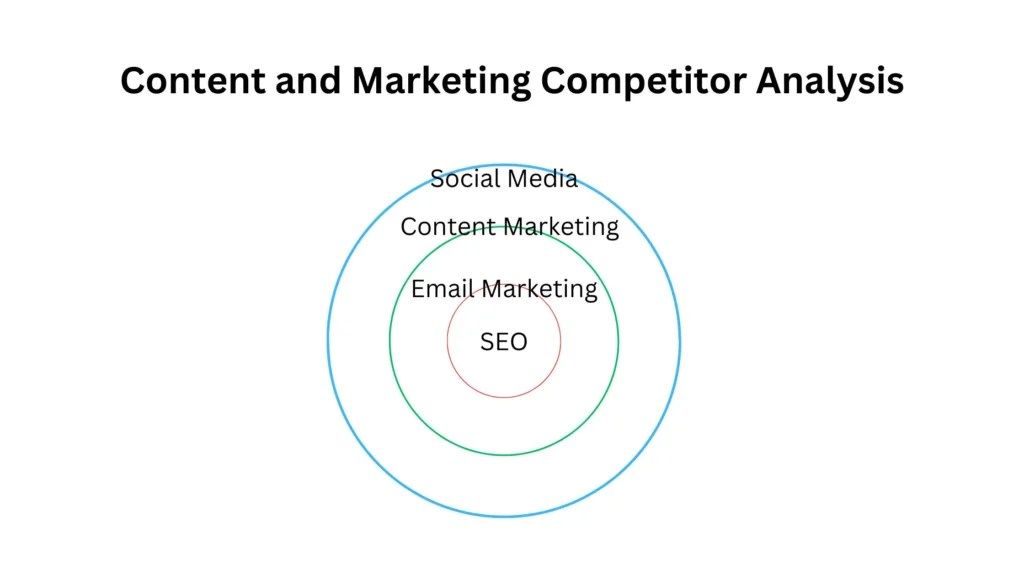
Content is king, they say. But in the realm of competitor analysis, it’s both the king and the treasure map! Let’s dive into dissecting your competitors’ content and marketing strategies:
- Content Audit: What types of content are your competitors producing? Blogs, videos, podcasts, ebooks? Analyze their content mix and frequency.
- Topic Analysis: What subjects are they covering? Are there any gaps you can fill?
- Engagement Metrics: Which of their content pieces are getting the most likes, shares, and comments? This is gold for understanding what resonates with your audience.
- Distribution Channels: Where are they sharing their content? Are they crushing it on LinkedIn but neglecting YouTube?
- Email Marketing: Sign up for their newsletters. Analyze their email frequency, content, and calls to action.
- Influencer Partnerships: Are they collaborating with influencers? Who, and how?
- Ad Strategies: Use tools like Facebook Ad Library to peek at their ad campaigns. What messages are they pushing?
Remember, the goal isn’t to copy but to inspire. Use these insights to fuel your own unique, kick-ass content strategy. After all, imitation might be flattering, but innovation is what sets you apart!
Leveraging Competitor Analysis for Product Development
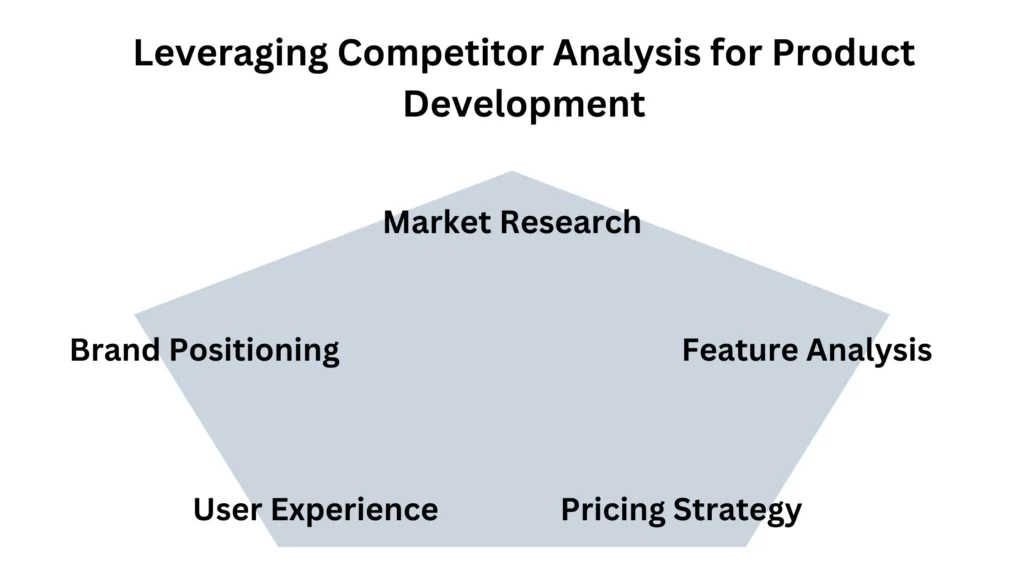
Think competitor analysis is just for marketing folks? Think again! It’s a goldmine for product development. Here’s how to use it to supercharge your offerings:
- Feature Comparison: Create a detailed matrix of your products vs. competitors. Where do you shine? Where can you improve?
- Customer Reviews: Mine your competitors’ customer reviews. What features are users raving about? What complaints keep popping up?
- Identify Market Gaps: Are there any customer needs that nobody’s addressing? That’s your opportunity to innovate!
- Track Product Updates: Keep an eye on your competitors’ product evolution. Are they moving in a particular direction?
- Pricing vs. Features: How do your competitors’ pricing align with their features? Is there room for a better value proposition?
- User Experience Analysis: If possible, use your competitors’ products. What’s their UX like? Can you offer a smoother experience?
Remember, the goal is to create products that don’t just match the competition, but leapfrog them. Use these insights as fuel for your innovation engine. Who knows? Your next big product idea might be hiding in your competitor analysis!
Competitive Analysis in Digital Advertising
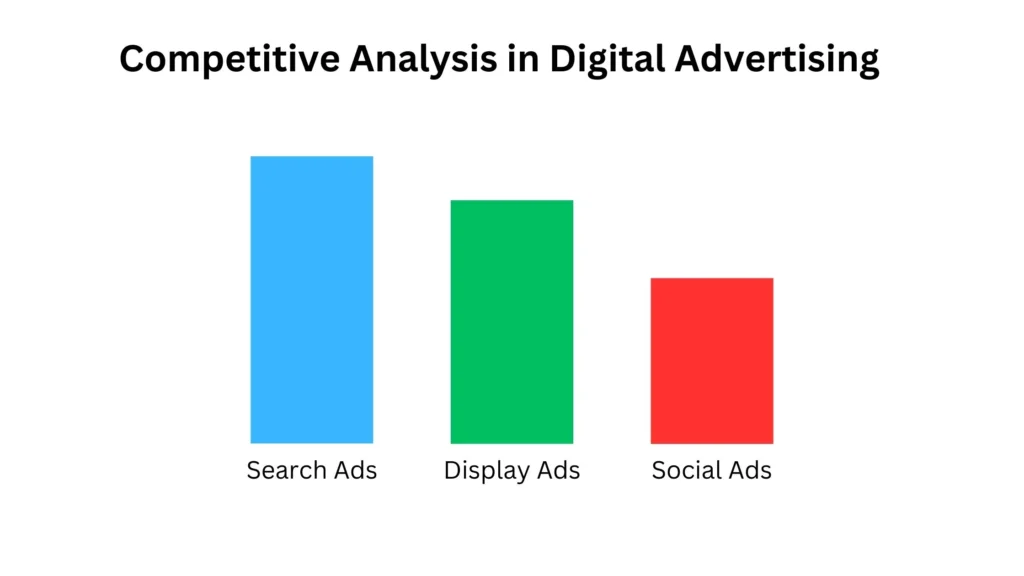
Ready to make your ad budget work harder? Let’s peek behind the curtain of your competitors’ digital advertising strategies:
- PPC Detective Work: Use tools like SEMrush or SpyFu to uncover your competitors’ paid search strategies. What keywords are they bidding on? What does their ad copy look like?
- Display Ad Analysis: Tools like Moat can show you your competitors’ display ads across the web. What visuals and messages are they using?
- Social Media Advertising: Facebook Ad Library is your best friend here. Analyze their ad creatives, messaging, and targeting strategies.
- Retargeting Trails: Visit your competitors’ websites and see how they retarget you. It’s like being a secret shopper but for ads!
- Ad Spend Estimation: While you can’t know exact figures, tools can give you ballpark estimates of your competitors’ ad spend. Are they outspending you? In which channels?
- Landing Page Analysis: Where are their ads leading? Analyze their landing pages for design, copy, and conversion optimization tactics.
Remember, the digital advertising landscape is always shifting. Stay agile, test different approaches, and always be learning. Your competitors’ successes (and failures) can be your best teachers in the school of digital advertising!
Creating an Actionable Competitor Analysis Report

Congrats! You’ve gathered a treasure trove of competitive intelligence. Now, let’s turn that data into a powerful, action-driving report:
- Executive Summary: Start with a bang! Summarize key findings and recommendations. Make it impossible for decision-makers to ignore.
- Competitor Profiles: Create detailed profiles for each major competitor, including their strengths, weaknesses, and unique selling propositions.
- Comparative Analysis: Use charts and graphs to visually compare your company against competitors across key metrics. Visual data tells a powerful story!
- Market Positioning Map: Plot out where each competitor (including you) sits in the market. It’s like a battlefield map for business!
- SWOT Analysis: Yes, it’s a classic for a reason. Break down the Strengths, Weaknesses, Opportunities, and Threats for each major player.
- Key Insights: What are the big takeaways? What surprised you? What confirmed your suspicions?
- Actionable Recommendations: The money section! Based on your analysis, what specific actions should your company take? Prioritize these based on potential impact and feasibility.
- Next Steps and Timeline: Don’t let your hard work gather dust. Outline clear next steps, owners, and timelines for implementing your recommendations.
Remember, a great competitor analysis report isn’t just informative – it’s transformative. It should light a fire under your team and guide your strategy. Now go forth and conquer your market!
Conclusion
Armed with the insights from this guide, you’re now ready to take your competitor analysis game to the next level! Remember, the key to success isn’t just gathering data – it’s about turning those insights into action. By regularly analyzing your competitors and adapting your strategies, you’ll stay one step ahead in the ever-evolving business landscape. So, what are you waiting for? Start your competitor analysis journey today and watch your business soar to new heights in 2024 and beyond!
Learn more about effective keyword research techniques on my website.